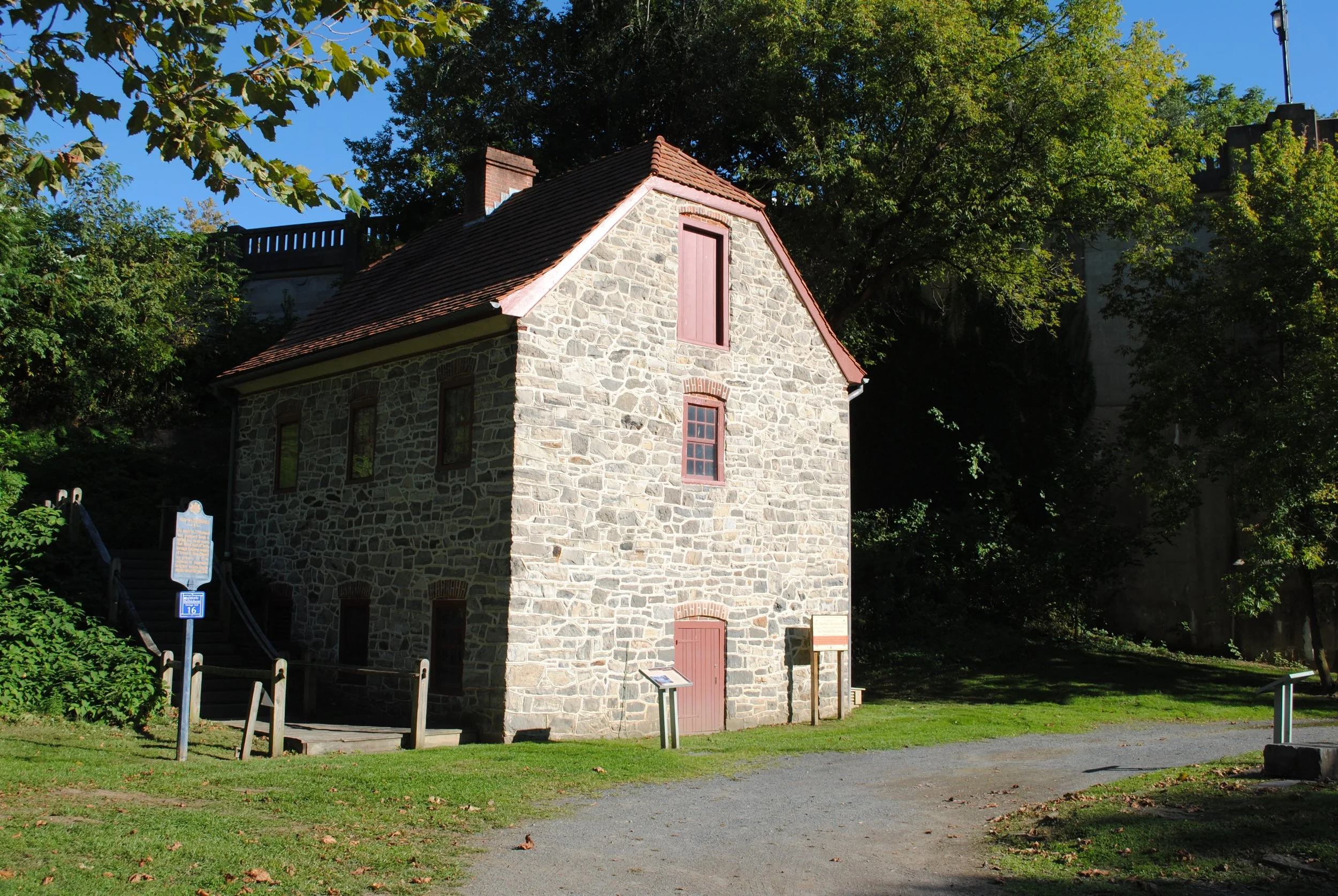Old Bethlehem Waterworks
The first known pumping system providing drinking and wash water in the North American colonies. When the Moravian missionaries from Germany first arrived at the confluence of Monocacy Creek and the Lehigh River in March 1741, they found an abundant spring at the foot of a steep slope that connected the creek’s floodplain with the surrounding country. They built their first house on the upper land directly above the spring and named their future town Bethlehem. For a few years, they obtained their water by assigning to appointed carriers the job of bringing the water uphill.
In September 1751 a millwright named Hans Christopher Christiansen arrived in Bethlehem from Holstein, which was then under Danish rule. He devised a method for replacing the water carriers with mechanical pumps and commenced the erection of the first waterworks early in 1754. The water was led from the spring by a conduit to a cistern over which a frame building was erected to house five inch diameter pumps made of lignum vitae. The water was forced through wooden pipes 70 feet up the hill into a distribution tank located in a square in the space now occupied by Central Moravian Church. Seven years later, Christiansen started the construction of more powerful permanent machinery. A two-story stone building 22 feet by 30 feet in plan was erected to house three single-acting iron pumps cast at the nearby Durham Furnace. The pumps, of 4-inch caliber and 18-inch stroke, worked by means of a triple crank geared to the shaft of an undershot waterwheel18 feet in diameter. The rising mains, made of gum wood, led the water to a distribution reservoir located on a wooden tower in the square mentioned earlier. From this point the water was distributed into cisterns or tanks built in the vicinity of principal dwellings. The reconstructed works became operational on July 6, 1762. The output of the spring and the water works was 800 gallons per minute. The spring continued to supply Bethlehem until 1912 when it was discovered that the water was contaminated. The spring was then sealed and replaced with wells at other locations in the city.
The two-story building is architecturally distinctive. It is made of hand hewn limestone, has Moravian brick arched windows and doors, and is covered with a red tile sloped roof. After several decades of other use, restoration of the stone building was completed in 1973 and of the machinery in 1976. An archeological investigation was carried out under the auspices of the University of Pennsylvania prior to the restoration.

